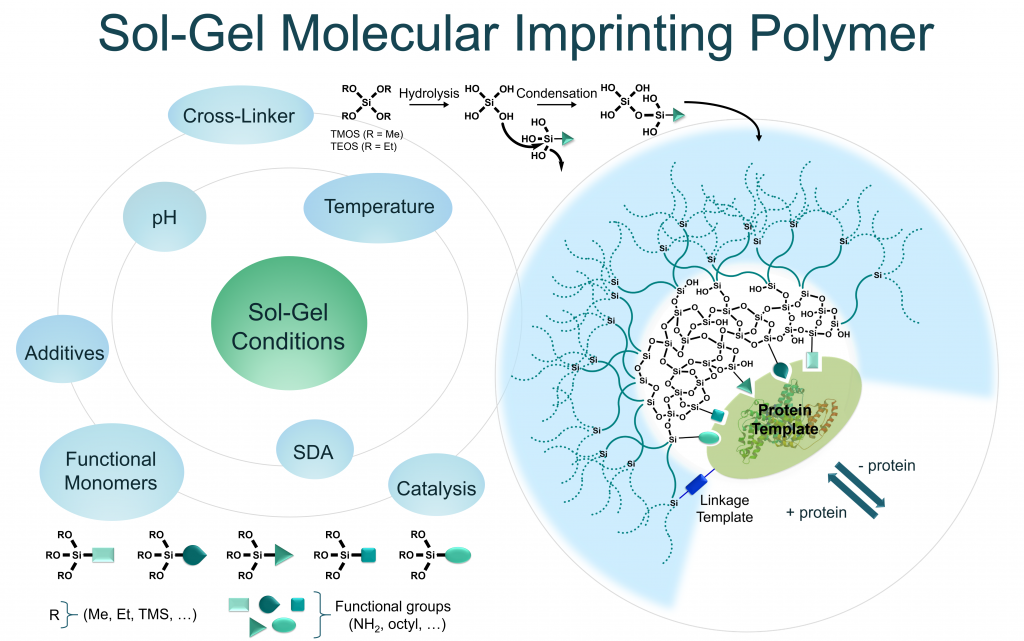J. Mater. Chem. B, 2021 Jan. https://doi.org/10.1016/j.xphs.2020.10.019

Abstract
Proteins play a central role for the signal transmission in living systems since they are able to recognize specific biomolecules acting as cellular receptors, antibodies or enzymes; or being themselves recognized by other proteins in protein/protein interactions, or displaying epitopes suitable for antibody binding. In this context, the specific recognition of a given protein, unlocks a range of interesting applications in diagnosis and in targeted therapies. Obviously, this role is already fulfilled with antibodies with unquestionable success. However, the design of synthetic artificial systems able to endorse this role is still challenging with a special interest to overcome limitations of antibodies, in particular their production and their stability. Molecular Imprinted Polymers (MIPs) are attractive recognition systems which could be an alternative for the specific capture of proteins in complex biological fluids. MIPs can be considered as biomimetic receptors or antibodies mimics displaying artificial paratopes. However, MIPs of proteins remains a challenge due to their large size and conformational flexibility, their complex chemical nature with multiple recognition sites and their low solubility in most organic solvents. Classical MIP synthesis conditions result in large polymeric cavities with and unspecific binding sites on the surface. In this review, the potentiality of sol-gel process as inorganic polymerization strategy to overcome the drawbacks of protein imprinting is highlighted. Thanks to the mild and biocompatible experimental conditions required and the use of water as solvent, the inorganic polymerization approach suits better to proteins than organic polymerization. Through numerous examples and applications of MIPs, we proposed a critical evaluation of the parameters that must be carefully controlled to achieve sol-gel protein imprinting (SGPI), including the choice of the monomers taking part in the polymerization.

